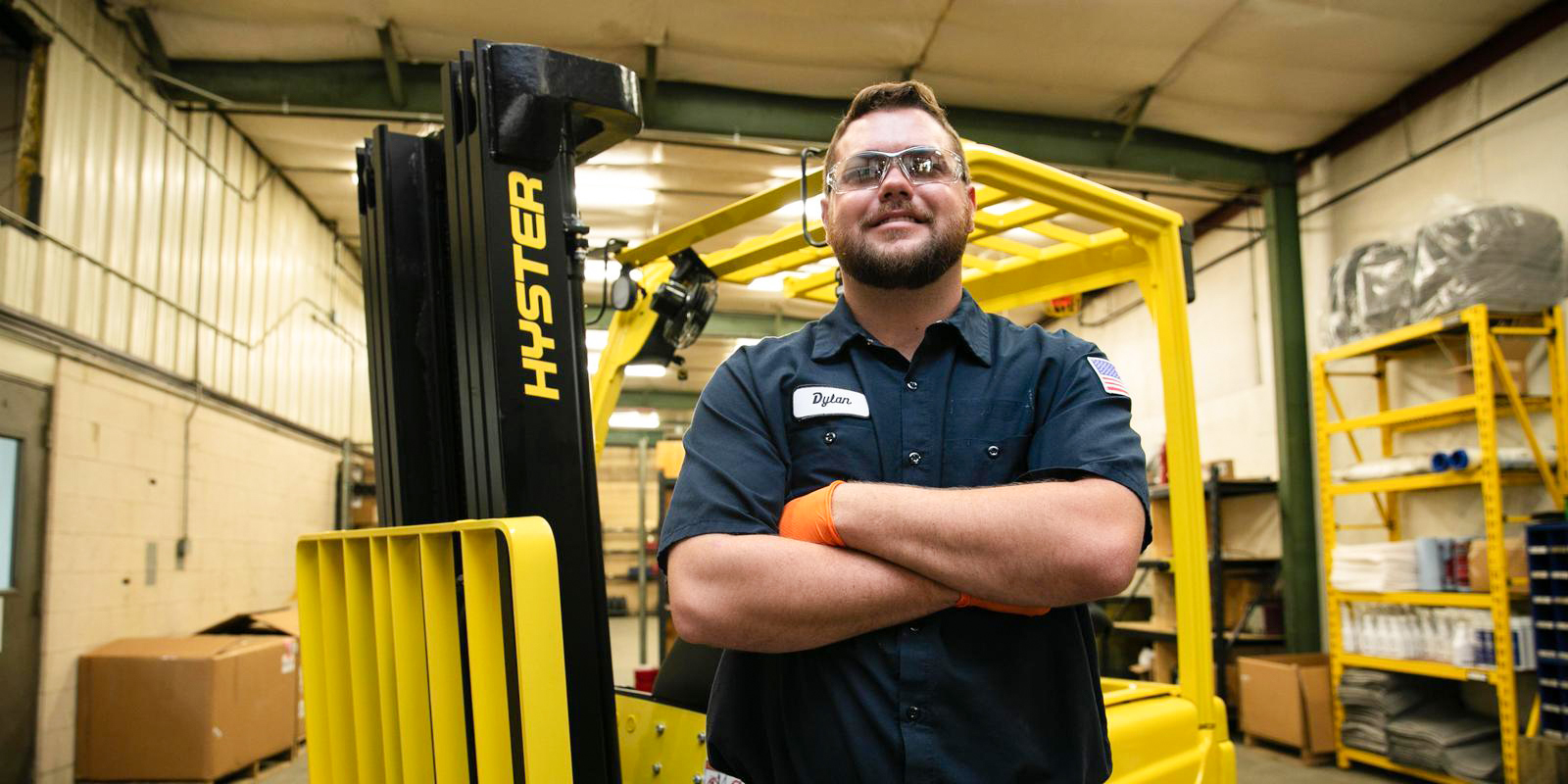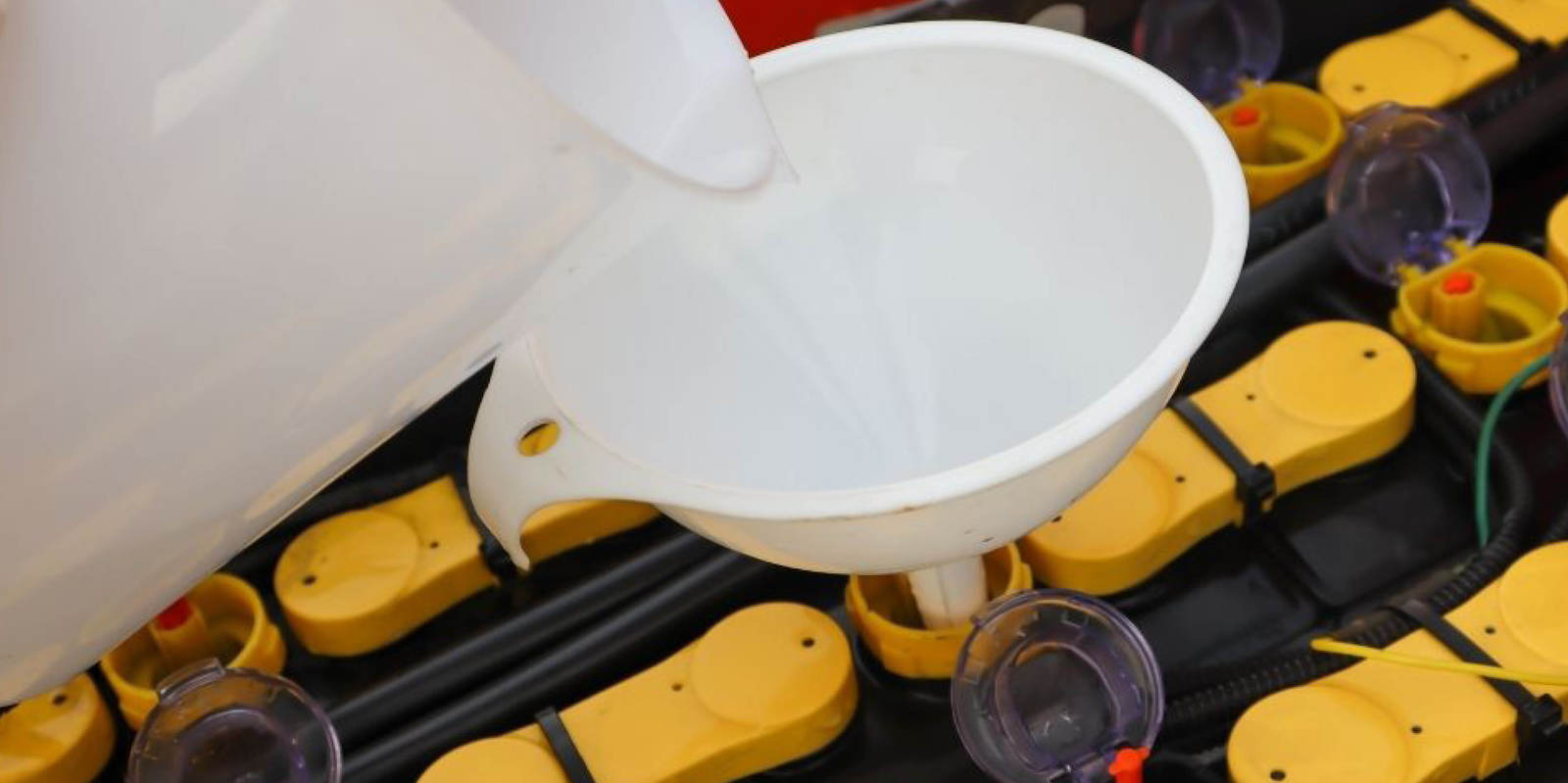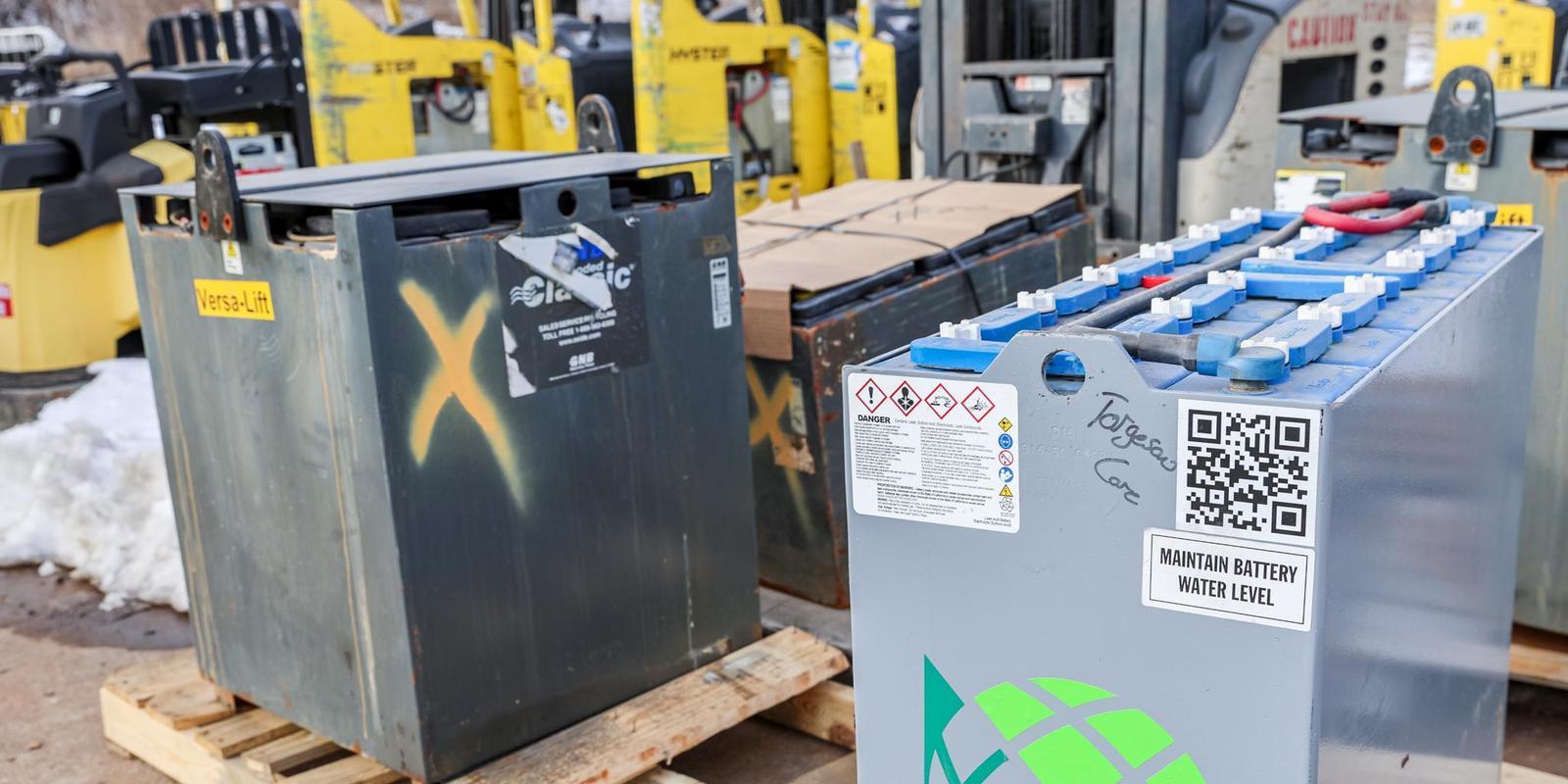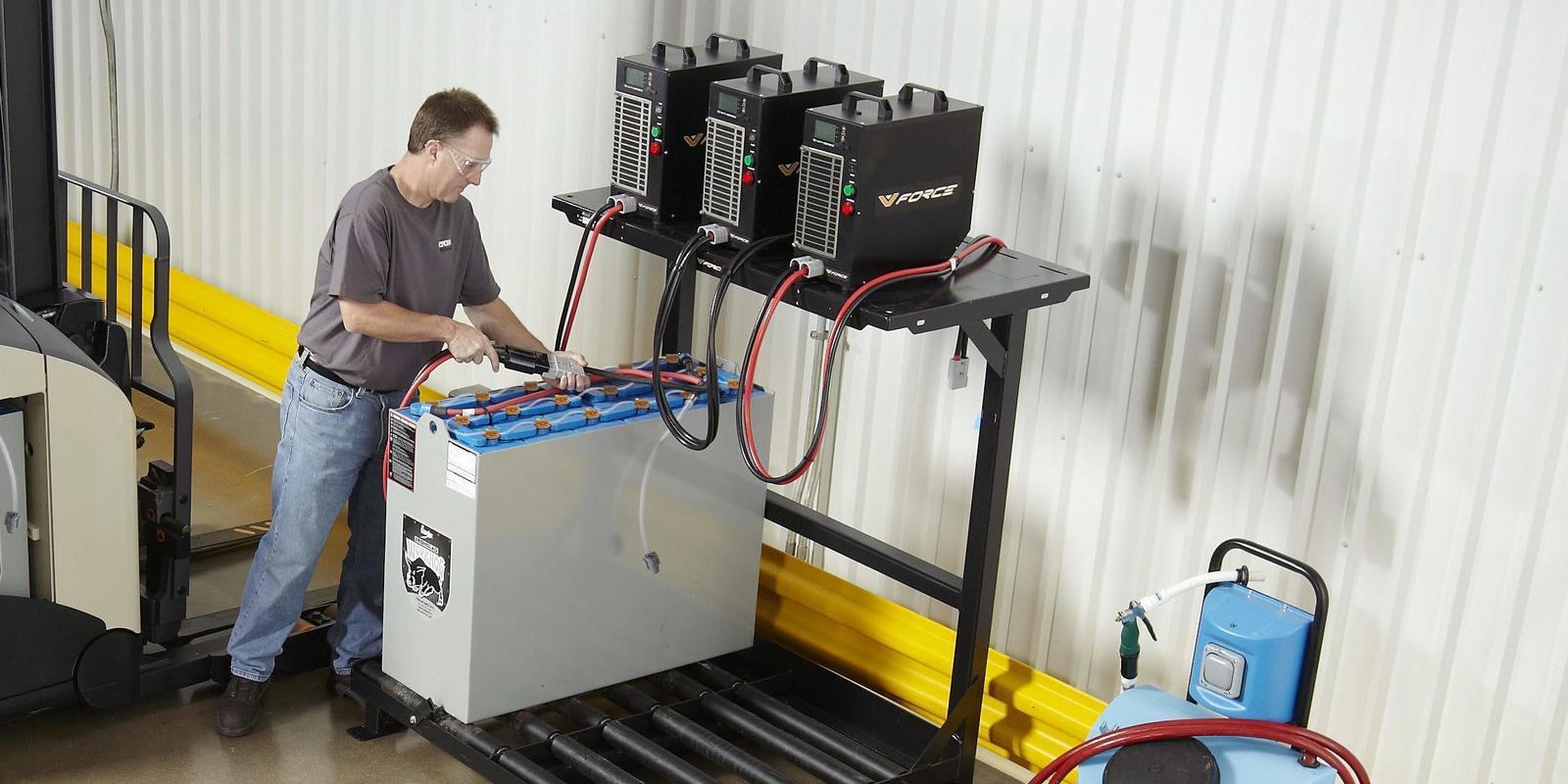Forklift Battery Charging: When & How to Charge Your Battery

A Comprehensive Guide to Charging a Forklift’s Battery
Nothing kills momentum on the floor faster than a dead forklift battery. No one has time for that. That’s why knowing when and how to charge a battery is so important. In this article, we plan to answer the most common forklift battery questions, then give you an easy-to-follow checklist for next time. Let’s get started!
When Should Your Forklift Battery Be Recharged?
Charging at the wrong time can damage the battery or waste its limited amount of cycles. Recharge your forklift’s battery when the charge is at 20-30% capacity. Specifically, you should:
- Avoid recharging below 20% capacity. Letting a battery drain too far can cause lead sulfate crystals to build up. It can also reduce capacity and overheat components.
- Avoid recharging above 30% capacity. Even a quick top-off counts as a full charge cycle, which reduces total lifespan if repeated.

What Steps Should You Take Before Charging a Forklift Battery?
Before charging the battery in your lift truck, you should:
- Park on level ground or in a safe, well-ventilated charging station.
- Turn off the forklift and set the parking brake.
- Put on protective equipment (gloves and goggles) and remove all jewelry.
- Open the battery compartment to allow heat to escape.
- Double check the charger is off.
- Verify that the charger’s voltage and amp-hour rating match the battery.
- Check cables and connectors for wear or damage.
- Disconnect the battery from the forklift (if it is lead-acid).
In addition to this list, keep the charging space free of sparks or flames, and prepare spill kits and eyewash stations in a nearby location.
Forklift Battery Charging Safety Hazards
Recharging brings its own set of risks for your team. Listed below are the most common ones. If you or a member of your team handles a lead-acid battery, you may encounter safety hazards in addition to the ones listed here.
- Heavy batteries: Some weigh up to 3,000 pounds. When in doubt, use lifting equipment to avoid injury from manual handling.
- Hydrogen gas: Charging produces hydrogen, which is highly flammable. Provide good ventilation to your work area and avoid creating any sparks and flames. We also suggest the use of hydrogen gas monitors.
- Corrosive electrolyte: Lead-acid batteries contain sulfuric acid, which can burn skin and eyes. Wear gloves and goggles and keep eyewash stations available.
- Spills: In addition to burning skin, acid spills can cause slips and falls. Have spill kits ready and train staff on proper cleanup procedures.
- Electrical hazards: Damaged cables or metal jewelry can cause arcs. Always switch off chargers before connecting or disconnecting.

When Should You Add Water to a Forklift Battery?
Water is essential for the health and safety of lead-acid forklift batteries. Check the water level once a week (or every 5-10 charge cycles). The water in your battery is low if the plates inside the battery are not covered. If your battery’s water level is low, follow these tips:
- Add water only after the battery has been fully charged and cooled. Filling beforehand can cause overflow when the electrolyte expands.
- Use distilled or deionized water to prevent mineral buildup.
- Keep a written record of watering to maintain consistency and protect warranty coverage.

The 3 Most Common Charging Methods
Conventional Charging
Conventional charging works by cycling the battery down before recharging, which helps preserve its overall health. It’s great for single-shift operations, but it limits flexibility because the battery can’t be used again right away.
Opportunity Charging
Opportunity charging tops off the battery during breaks, keeping forklifts ready for frequent use. It reduces battery swaps and works well with lithium-ion. But, this method can shorten lead-acid lifespan, and the lead-acid battery still needs to be equalized.
Fast Charging
Fast charging pushes high current into the battery for quick boosts, making it useful in nonstop or three-shift operations. It minimizes downtime but creates more heat and stress, which can shorten battery life if used frequently.
How Long Does It Take to Recharge a Forklift Battery?
Charging time depends on the method and type of battery. In general, lithium-ion batteries tend to recharge much faster than traditional lead-acid ones. For lead-acid batteries, here’s how each method affects recharging time:
- Conventional charging: 8 hours to reach full charge, followed by 6-8 hours to cool
- Opportunity charging: 10 to 30 minutes to reach partial charge, which can be as high as 80% percent. Still requires a full 8-hour conventional charge to reach 100%.
- Fast charging: 4-6 hours to reach full charge, with a big boost after 10-30 minutes.

Step-by-Step Guide to Charging a Forklift Battery
This complete checklist reiterates safety steps that we mentioned earlier and adds battery charging instructions. Reference this list the next time you use the conventional method to recharge the battery in your lift truck.
- Park on level ground or in a safe, well-ventilated charging station.
- Turn off the forklift and set the parking brake.
- Put on protective equipment (gloves and goggles) and remove all jewelry.
- Open the battery compartment to allow heat to escape.
- Double check the charger is off.
- Verify that the charger’s voltage and amp-hour rating match the battery.
- Check cables and connectors for wear or damage.
- Disconnect the battery from the forklift (if it is lead-acid).
- Connect the charger to the battery.
- Allow the battery to charge fully without interruptions.
- When charging is finished, switch off and disconnect the charger.
- Let the battery cool completely.
- Check fluid levels and add distilled water if needed.
- Reconnect the battery to the forklift (if applicable).

Battery Rejuvenation at Berry Material Handling
Forklift battery charging protects your team and extends the life of your equipment. At Berry Material Handling, we offer forklift battery regeneration services with our Xtender battery regenerator. The Xtender breaks down damaging sulfation and recharges your battery back to as much as 100%, extending the life of your battery for years to come. Bring your lift truck to our Wichita or Topeka locations. Our Service department will handle the rest!
Or, if you need a new battery, we can help with that, too. Contact our Parts department to find the right battery for your forklift.

